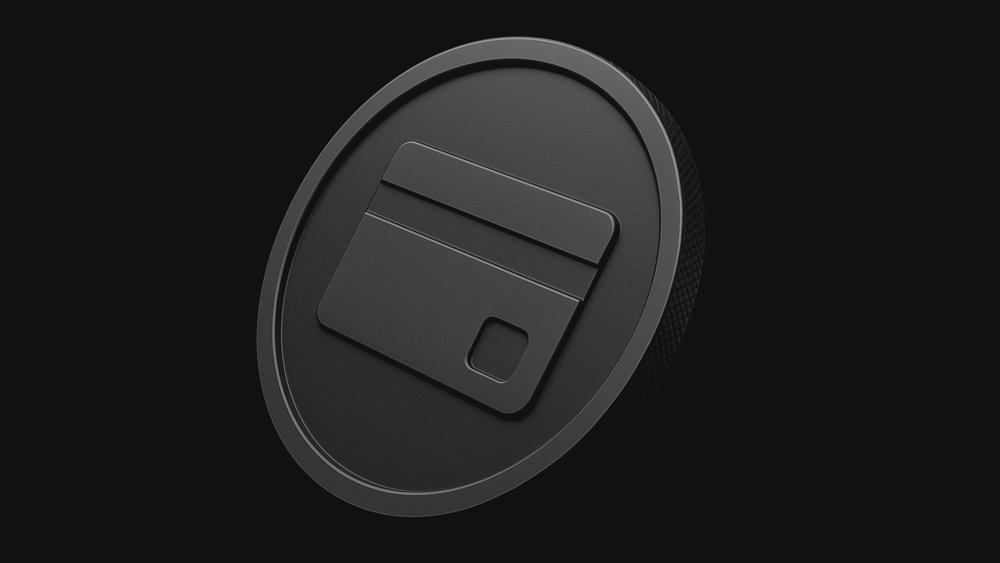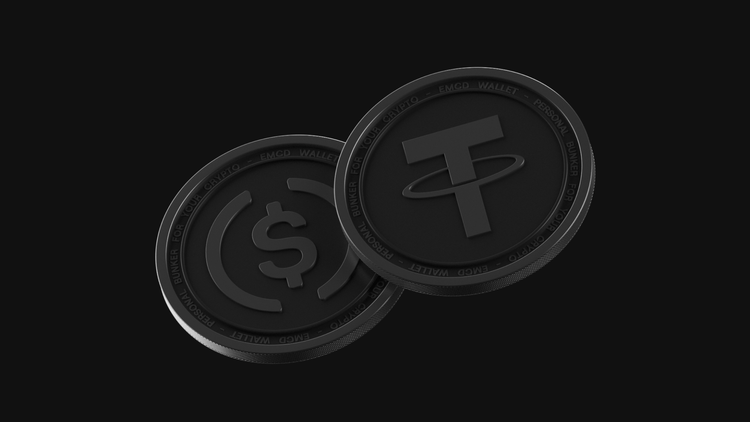Step-by-Step Guide: How to Choose the Right Crypto Payment Gateway for Your Business

A crypto payment gateway is a tool that lets businesses accept digital currencies — like Bitcoin or USDT — just like they would regular money. It connects the buyer, the blockchain, and your checkout. Fast, borderless, no banks involved.
In 2025, more companies are adding crypto options to stay flexible, cut fees, and reach global users who don’t want to pay in fiat. But not every gateway fits every business. Integrations differ. So do fees, currencies, regions, and rules.
This guide breaks it down simply — what to look for, what to avoid, and how to choose the right crypto payment gateway for your business without wasting time (or budget).
What Is a Crypto Payment Gateway — and How Does It Actually Work?
A crypto payment gateway lets businesses accept payments in digital currencies — like Bitcoin, USDT, or Ethereum — through their website, app, or POS system. It connects the customer, the blockchain, and your wallet. No banks, no delays.
Technically, it works like this: the buyer pays in crypto, the gateway processes the transaction, and the business gets the funds — either in crypto or converted to fiat.
Compared to traditional processors, crypto gateways skip the middlemen. That means faster settlement, fewer geographic limits, and lower fees for international payments. Some gateways offer automatic conversion to stablecoins or local currency. Others give you the option to hold the assets as is.
The difference comes down to this: traditional gateways run on banking rails. Crypto gateways run on blockchains.
The rest is integration, fees, and risk appetite — which we’ll break down next.
Crypto Payment Gateway vs. Traditional Processor
| Feature | Crypto Payment Gateway | Traditional Payment Processor |
| Currencies Supported | Bitcoin, Ethereum, stablecoins, altcoins | Fiat only (USD, EUR, etc.) |
| Settlement Speed | Minutes to hours | 1–5 business days |
| Global Accessibility | Borderless, no banking needed | Limited by banking infrastructure |
| Fees (Avg.) | 0.5–1.5% (some lower) | 2.9% + fixed per transaction |
| Chargebacks | Not possible | Common (fraud or customer disputes) |
| Conversion Options | Crypto-to-crypto, crypto-to-fiat | Not applicable |
| Volatility Management | Optional auto-conversion to stablecoins or fiat | Not needed |
| Integration Options | APIs, plugins, POS terminals | APIs, plugins, POS terminals |
Crypto Pays Off: Why More Businesses Are Accepting Digital Currency
Crypto payments are no longer just for tech startups. In 2025, they’re becoming a standard option across ecommerce, SaaS, gaming, and digital services — especially for businesses with global customers.
Why? Because they solve real problems.
Traditional payment systems are expensive, slow, and often limited by region or currency. Crypto cuts through that. With a good gateway, businesses can accept digital payments from anywhere in the world, in seconds, without relying on banks. It’s borderless by default.
Fees are lower too. Crypto transactions usually cost less than 1.5%, with no hidden conversion or cross-border charges. And unlike card payments, there are no chargebacks or disputes to manage after the sale.
There’s also growing customer demand. More users — especially in Latin America, Southeast Asia, and parts of Europe — prefer paying with cryptocurrencies. For them, crypto isn’t hype. It’s stability.
For online stores, platforms, and marketplaces, this opens up access to a digital-native audience that’s ready to spend, but underserved by legacy payment systems.
Whether you’re running a niche SaaS product or a global ecommerce business, accepting crypto gives you another way to get paid — fast, directly, and without intermediaries.
Choosing Isn’t Just Technical — It’s Strategic
Not every crypto payment gateway is built the same. And choosing the wrong one can slow you down or add hidden costs. The right fit depends on what your business needs today — and where it’s going next.
Some gateways are built for high-volume ecommerce. Others are better for platforms, SaaS, or marketplaces. Some focus on instant conversions to fiat. Others let you hold crypto or settle in stablecoins.
Before you choose a crypto payment gateway, take a moment to define what matters most to your business: speed, currency support, compliance, ease of integration, or fee structure. The right crypto payment gateway should match how your business operates, not the other way around.
Here’s what to compare before choosing a provider.
Top 7 Factors to Consider When Choosing a Crypto Payment Gateway
- Supported currencies
Does it handle the coins your customers use? Is it Bitcoin-only, or does it support stablecoins and altcoins? - Settlement options
Can you hold crypto? Auto-convert to fiat? Choose a flexible setup based on your cashflow needs and risk profile - Integration methods
Look for APIs, plugins, or hosted checkout pages that match your technical setup. Less friction = faster launch - Compliance & licensing
Make sure the provider is registered where it needs to be — especially if you operate in the US, EU, or Asia - Fee transparency
Some platforms add hidden network or conversion fees. Look for clear pricing on transaction, conversion, and withdrawal costs - Security features
Two-factor authentication, data encryption, and fraud monitoring should come standard - Customer support
If something breaks, you need a real person — not just a help center. Check response times and service availability
By comparing these factors side by side, you can choose the right crypto payment gateway that doesn’t just check boxes — it actually works with how your business runs.
Not All Coins Are Created Equal: What to Know About Crypto Support
Every crypto payment gateway comes with a list of supported currencies and blockchain networks — and that list matters more than it might seem.
Some gateways are Bitcoin-only. Others support major chains like Ethereum, BNB Chain, Polygon, and newer Layer 2 networks. Many now offer access to stablecoins like USDT, USDC, or DAI — which are especially popular with users who want crypto speed but fiat-like stability.
If your customers are in the U.S. or EU, Bitcoin and Ethereum might be enough. But if you’re working with markets in Latin America, Africa, or Southeast Asia, stablecoins are often the preferred method for day-to-day transactions. They’re faster, cheaper, and less volatile.
| Feature | Why It Matters for Your Business | What to Ask When Choosing |
| Bitcoin Support | Still the most recognized and trusted cryptocurrency | Is BTC available for both on-chain and L2? |
| Stablecoin Support | Preferred for day-to-day use in high-volatility regions | Are USDT/USDC supported across chains? |
| Altcoin Diversity | Gives users more options, especially in Web3 communities | Can you accept tokens on Solana, Polygon? |
| Multi-Chain Capability | Lower fees, faster transactions, more flexibility | Is it single-chain or multi-chain? |
| Custom Token Support | Useful for marketplaces, loyalty, or Web3 projects | Can you whitelist or request new tokens? |
Then there’s the network question. A multi-chain gateway gives you more flexibility, lower fees, and better routing options for your users. A single-chain provider might be simpler — but it could limit your audience and expose you to higher transaction costs during network congestion.
Choosing a gateway that supports the right cryptocurrencies isn’t just about what’s trending. It’s about making sure your checkout matches your customers’ behavior — and your business model.
Integration Shouldn’t Be a Headache: How to Add a Crypto Gateway Without Breaking Your Site
One of the biggest advantages of modern crypto gateways is that they don’t require a full dev team to implement. Whether you’re running a custom ecommerce site, a Shopify store, or a platform built on WordPress, there are plug-and-play tools that make integration fast and low-risk.
The best gateways offer multiple ways to integrate into your stack. Some provide ready-to-use plugins for ecommerce platforms. Others offer SDKs and REST APIs for businesses that need more control over the checkout experience.
If your team is technical, API access gives full flexibility — from payment buttons to custom confirmation flows. If not, hosted checkout pages and prebuilt modules can still get you live quickly without coding.
The right payment processor should match the tools you already use. A good crypto service fits your business — not the other way around. And if you need help, look for providers that offer technical support, sandbox environments, and live documentation to speed up testing.
Popular Platforms That Support Crypto Gateway Plugins
You don’t need to rebuild your site to start accepting crypto. Most major ecommerce platforms already support crypto payment plugins out of the box, including Shopify, WooCommerce, Magento, BigCommerce, OpenCart, Wix, Squarespace, PrestaShop, and Ecwid.
If your platform isn’t on this list, most gateways also offer custom integration via API or hosted checkout. Either way, you’ve got options — no heavy development required.
Security Isn’t a Bonus — It’s the Bare Minimum
No matter how fast or cheap a crypto gateway is, if it doesn’t handle security and compliance properly, it’s not worth the risk.
Every serious payment provider should offer a full stack of secure infrastructure — from encrypted transaction flows to hardened wallet systems. That includes multi-signature custody setups, cold storage for long-term balances, and token-specific risk controls.
But technical safety is only part of the story. Legal compliance matters too — especially if your business operates across multiple regions. Some providers are licensed in the EU, UK, or U.S. Others focus on APAC, LATAM, or MENA markets. Before you integrate, check whether the provider works in all the jurisdictions your customers are in.
A reliable crypto gateway will also be KYC/AML ready — meaning it can handle user identity checks if required by local law. Even if your business doesn’t need it now, having this functionality built-in can save time later if regulations change.
Then there’s data security. Any service that handles payments should protect customer information during every step of the flow. That means TLS encryption, PCI-DSS-level practices, and strong internal access controls. If a provider can’t explain how it secures transaction data, that’s a red flag.
For most businesses, this isn’t about being paranoid — it’s about doing the basics right. Crypto payments might be new to some markets, but secure transactions and user trust aren’t.
Fees, Settlement Times, and the Hidden Costs No One Mentions
Every crypto payment provider promises low fees — but not all pricing is easy to decode.
Most gateways charge a base percentage per transaction. You’ll usually see numbers between 0.5% and 1.5%, depending on volume, service level, and whether you want instant fiat conversion. That’s cheaper than credit cards, but it’s only part of the picture.
Some platforms also pass along network (gas) fees, especially if you’re accepting Ethereum or other Layer 1 coins during high-traffic periods. Others offer fixed-fee setups, but may build those costs into conversion spreads or withdrawal charges.
Settlement speed is another variable. Some providers offer near-instant settlement in crypto. Others convert to fiat and send payouts in daily or weekly batches — which can delay cash flow, especially if you’re operating across time zones or regions.
And then there are hidden costs. These are the ones most businesses don’t spot until it’s too late: minimum withdrawal thresholds, network congestion surcharges, currency conversion spreads, or API usage caps.
Here’s a quick comparison of typical fee structures from crypto gateway providers in 2025:
Sample Fees from Top Crypto Payment Gateways (2025)
| Provider | Transaction Fee | Fiat Conversion Fee | Settlement Time | Notes |
| Gateway A | 0.8% | 1.0% | Same day (crypto), 1–2 days (fiat) | Multi-chain, supports stablecoins |
| Gateway B | 1.0% flat | Included | Instant (crypto only) | No fiat support |
| Gateway C | 0.5% + gas fees | Optional 0.9% | 24–72h (fiat) | Network-dependent pricing |
| Gateway D | 1.2% | Included | Weekly batch (fiat) | Best for high-volume ecommerce |
Before you pick a provider, take the time to map out your expected transactions by volume, currency, and geography. That’s where the real cost patterns emerge.
You’ll find that a slightly higher base fee might actually cost you less overall — if it comes with faster settlement, fewer surprises, and better service.
How the Best Crypto Payment Gateways Stack Up
There’s no single ‘best’ crypto gateway — only the one that fits your business model. But there are a few well-established providers that stand out in terms of flexibility, reputation, and global coverage.
Here’s a look at some of the top crypto payment gateways on the market in 2025 and what makes each one different. This isn’t a ranking — it’s a snapshot to help you find a solution that matches your use case.
CoinGate
Well known in the EU, CoinGate supports 70+ cryptocurrencies and offers both crypto-to-crypto and crypto-to-fiat processing. It works with Shopify, Magento, and WooCommerce, and provides payout options in EUR, USD, and BTC. Ideal for merchants looking for wide chain support and clean UX.
NOWPayments
NOWPayments is built for quick integration — with plugins, APIs, and simple checkout links. It supports 150+ coins across multiple chains, offers optional auto-conversion to stablecoins, and is known for its responsive support team. Good choice for ecommerce and platforms with mixed traffic.
BitPay
One of the longest-running names in the space, BitPay focuses on larger businesses and supports Bitcoin, Ethereum, and stablecoins. Offers fiat payouts in multiple currencies and robust compliance features. Its interface is enterprise-grade, though pricing is slightly above market average.
Triple-A
Licensed in Singapore and France, Triple-A puts regulatory compliance first. It supports common tokens and stablecoins and offers conversion and settlement in local currency. Trusted by many APAC-based businesses that prioritize licensing and clarity.
OpenNode
Best known for Bitcoin and Lightning Network support, OpenNode is fast and lightweight. It doesn’t offer a broad range of altcoins, but it’s a go-to solution for businesses focused purely on BTC. Integrates well with ecommerce platforms and WordPress-based stores.
Quick Guide: What to Compare Across Providers
| Provider | # of Coins | Fiat Payouts | Chains Supported | UI & Integration | Best For |
| CoinGate | 70+ | Yes | Multi-chain | Plugins & API | EU-based ecommerce |
| NOWPayments | 150+ | Optional | Multi-chain | Easy setup | Global digital stores |
| BitPay | 10+ | Yes | BTC, ETH, stablecoins | Enterprise | High-volume companies |
| Triple-A | ~20 | Yes | BTC, ETH, USDT | API | Regulated markets |
| OpenNode | BTC only | Yes (fiat) | Bitcoin, Lightning | Plugins/API | Bitcoin-focused businesses |
The right crypto payment gateway provider isn’t the one with the longest feature list — it’s the one that matches your currencies, customers, and regions.
Use this as a guide, not gospel. What works for a SaaS business in Berlin may not work for a marketplace in Brazil. But if you're choosing among the best crypto payment gateways, the options above are a solid place to start.
From Plan to Payment: Tips for a Smooth Integration Process
Choosing a gateway is just step one. Getting it live — without breaking your flow or confusing your customers — is where real-world readiness kicks in.
The integration process doesn’t have to be complicated, but there are a few things that can save time (and headaches) during launch.
Start with a sandbox. Most providers offer test environments that let you simulate real payments without moving real crypto. This helps your team find bugs, test confirmation flows, and tweak UX before going live.
Use a checklist. Before launch, double-check your payment settings, fallback options, currency conversion rules, wallet addresses, and webhook responses. A missed setting can cost real money.
Help your team understand what’s changing. Whether it’s support staff, finance, or devs — make sure everyone knows how the new system works, what to do if something fails, and who to contact.
Educate your customers, too. Add a short FAQ or tooltip to your checkout page explaining how crypto payments work, what currencies you accept, and how long confirmations usually take. It builds trust and reduces drop-offs.
This step isn’t just technical — it’s operational. A well-tested rollout turns your gateway into an asset, not a support ticket waiting to happen.
Conclusion — How to Choose Smartly and Scale Confidently
There’s no single formula for the right crypto payment gateway. It all comes down to how your business operates — and what it needs to grow.
If you process high-volume sales, you’ll prioritize speed, compliance, and stablecoin support. If you run a niche ecommerce store or SaaS platform, you may care more about integration simplicity or fiat conversion options. The key is to choose a processor that meets your customers where they are, not just where the hype is.
The best gateway for your business is the one that fits into your existing flow, supports the currencies you rely on, and scales with your future plans. In crypto — as in all things — clarity beats complexity.
So take your time, compare smart, and choose the setup that does the work for you. That’s how you build payment infrastructure that works today and keeps up tomorrow.
FAQ
What is the most important factor when choosing a crypto payment gateway?
It depends on your priorities, but most businesses look at four things: which coins are supported, how quickly you receive funds, fee structure, and ease of integration. The best crypto payment gateway for your business is the one that matches your currencies, customers, and compliance needs.
Can I use one gateway for both crypto and fiat payments?
Yes — many providers let you use one gateway to accept crypto and settle in fiat. Some offer real-time conversion to your preferred currency, while others let you hold the crypto and convert later. Just make sure the provider supports fiat payouts in your region and has clear settings for conversion.
How do I ensure the security of transactions?
Start by choosing a provider that uses end-to-end encryption, secure wallet infrastructure, and two-factor authentication. On your end, protect your private keys, limit admin access, and test your integration thoroughly. You don’t need to be a security expert — but your provider should be.
Are crypto payment gateways suitable for small businesses?
Definitely. Whether you run an online store or a SaaS product, you can integrate crypto payments with minimal effort. Many gateways offer plug-ins, hosted pages, and low setup costs — which means you can accept crypto without changing your stack or hiring a dev team.
What are the typical fees?
Most gateways charge 0.5% to 1.5% per transaction. You might also see network fees (especially for Ethereum), or small withdrawal and conversion charges. Always check for hidden costs in the fine print — because that’s where you’ll find the real difference between providers.
How quickly can I receive funds?
Crypto settlements are often near-instant. If you want fiat, timing depends on your provider — some pay out daily, others batch transactions every few days. The best services let you choose how and when you want to get paid.




